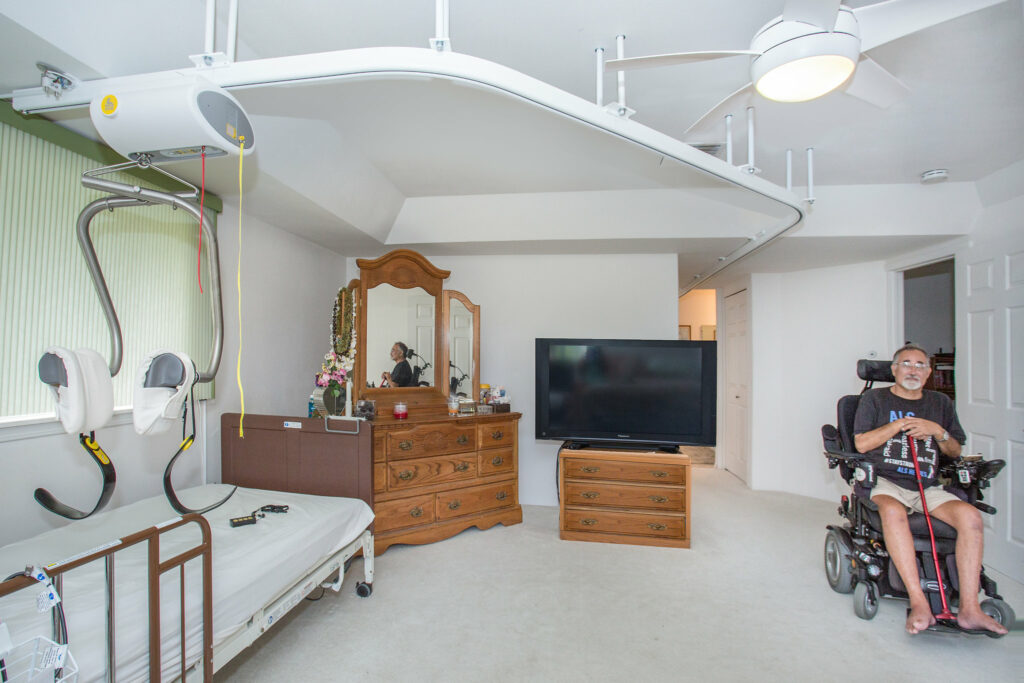Introduction:
Are you or a loved one in Honolulu living with ALS? Discover how ceiling track lift systems can dramatically improve independence and safety at home. Our case study shows how this innovative solution transformed the daily life of a 70-year-old ALS patient, making transfers safer and more manageable.
Client Background:
Robert, a Honolulu resident with advanced ALS, faced challenges with constant wheelchair use and required help with daily transfers. Seeking a solution to increase independence, Robert and his wife turned to ceiling track lift systems for a game-changing improvement in their home.
Before
After
Solution: Ceiling Track Lift System
The ceiling track lift system features overhead tracks and a motorized lift, designed to make transfers between the bed, wheelchair, and toilet seamless and secure. This modification not only enhances safety but also fosters greater autonomy.
Benefits:
1. Cost-Efficiency
– Save on Caregiving Costs: By reducing the need for daily caregiver assistance, the ceiling track lift system offers significant savings over time. The one-time cost of installation is far less than the ongoing expense of hiring a caregiver.
– Support for the Family: The system allows the client’s wife to return to work, improving their financial situation and overall quality of life.
2. Health & Psychological Benefits
– Prevent Injuries: The lift system helps avoid muscle strain and injury during transfers, a crucial factor for ALS patients.
– Boost Mental Health: Increased independence in daily activities can enhance mental well-being, offering a sense of control and reducing feelings of helplessness.
3. Safety
– Reduce Fall Risks: The system minimizes the chances of falls during transfers, preventing severe injuries and associated medical costs.
– Emergency Readiness: In emergencies, the lift system ensures safe and quick movement from bed to wheelchair for immediate assistance.
4. Family Dynamics
– Alleviate Caregiver Strain: The system reduces physical strain on caregivers, decreasing the risk of burnout and improving family dynamics.
– Quality Time: With less physical caregiving required, families can enjoy more quality time together, strengthening their emotional connection.
5. Extended Benefits
– Increase Home Value: Accessible home modifications can enhance property value, appealing to buyers in the Honolulu market looking for homes with special features.
– Adaptable Solution: The system can be scaled or modified to accommodate changing needs, such as bathroom accessibility improvements.
Conclusion:
Ceiling track lift systems offer a comprehensive solution for ALS patients in Honolulu, providing safety, independence, and significant cost savings compared to long-term caregiving. This case study highlights the positive impact on Robert’s quality of life, mental health, and family dynamics. For those facing similar challenges, consulting with an occupational therapist can help identify the best home modifications tailored to individual needs.
Interested in learning more about how ceiling track lift systems can improve life for ALS patients? Contact us for a personalized assessment and discover how we can help enhance your home’s accessibility and safety.
